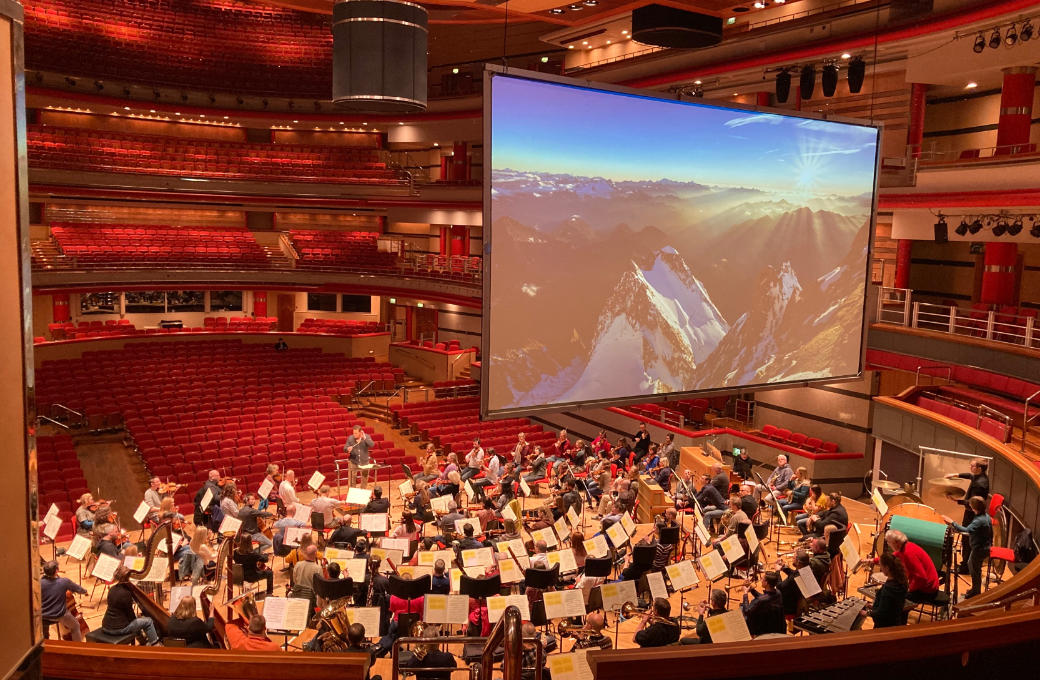Wow! As Nikolaj Szeps-Znaider took to the Symphony Hall stage at the start of Monday evening’s Royal Liverpool Philharmonic Orchestra concert, not many of us can have had much of an idea what lay in store. His demeanour and body language seemed relaxed, self-effacing, almost discreet, with none of the swish and swagger that accompany rather too many of today’s conductors.

As Bruch’s Violin Concerto no. 1 in G minor began, with Szeps-Znaider also taking the role of soloist, his movements were similarly low-key: vague waves of the hand or bow, a slight lean of his body, the makings of a nod. Yet what emerged from this almost absurdly undemonstrative display was astonishing. Aside from a few soft entries in the opening moments as everyone got locked into the tempo, this was as immaculate a performance of this concerto as one could possibly imagine. Szeps-Znaider offered intimacy and reflection, to which the RLPO responded with sympathetic warmth and rich, vibrant climaxes.
The transition into the second movement was utterly exquisite, the final chord just hanging gently in space, fading ever so slowly, waiting patiently for the violin to begin. It was just one (though perhaps the best) of a myriad examples of the fundamental connection between soloist and orchestra, existing in a fluid relationship characterised by flexibility and freedom, but always united when required. Together, they took the Adagio from a blaze of colour into more nuanced light and shade, Szeps-Znaider managing to sound elevated, though grounded and immediate. The Finale was so light-footed it practically skipped along, even in the tuttis, bringing this stunningly beautiful performance to a close with the most cheerful gusto.
Strauss’ Alpine Symphony was accompanied by images by photographer Ben Tibbetts, which could not have been more suitably chosen and made for a superb addition to the performance. Once again, the RLPO’s sound was nothing less than extraordinary. A lovely sense of brooding darkness yielded to signs of alpenglow and – though we all knew it was coming – out into a genuinely dazzling sunrise, its broad melody decorated with a remarkable clarity of inner detail. As they had in the Bruch, the orchestra skipped through the meadows, though Szeps-Znaider upped the ante once the trek had properly begun. We were literally thrown into the woods, in a filmic moment that instantly brought uncertainty everywhere. Easing us back to light and relaxation, lyrically overflowing all the way, we were then plunged into water and over the falls (not merely standing beside them) yet, again, the orchestra guided us back to green pastures, still with a spring in its step.
Even the cows seemed to be frolicking – cowbells-a-go-go! – and by now it was clear that Szeps-Znaider was making the journey entirely organic, the music shape-shifting seemingly spontaneously according to the changing landscape, light and elements. More violence returned as we were hurled onto glacial rocks, a sense of danger mingling with nervous excitement, before arriving at the rarefied atmosphere near the summit. Whereupon pure glory radiated everywhere, and again one was struck by both the quantity and transparency of the inner parts, testifying to Strauss’ incredible orchestrational skill.
Somehow, beginning the descent, there was the impression of music holding its breath and, despite the RLPO possessing what must be the least effective wind machine I’ve ever not heard, the subsequent storm was nonetheless an essay in sheer sonic calamity, letting loose overwhelming power. Vestiges of light and a lovely progression through simplicity to dark solemnity brought the journey to an end, leaving one exhausted but exhilarated, eager to do it all again as soon as possible.


